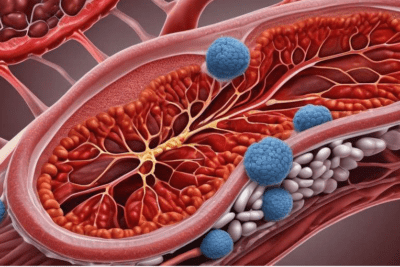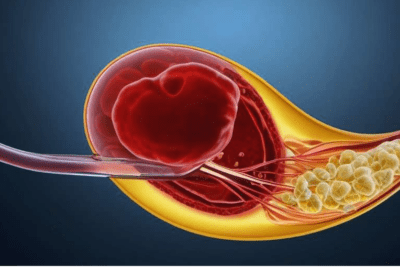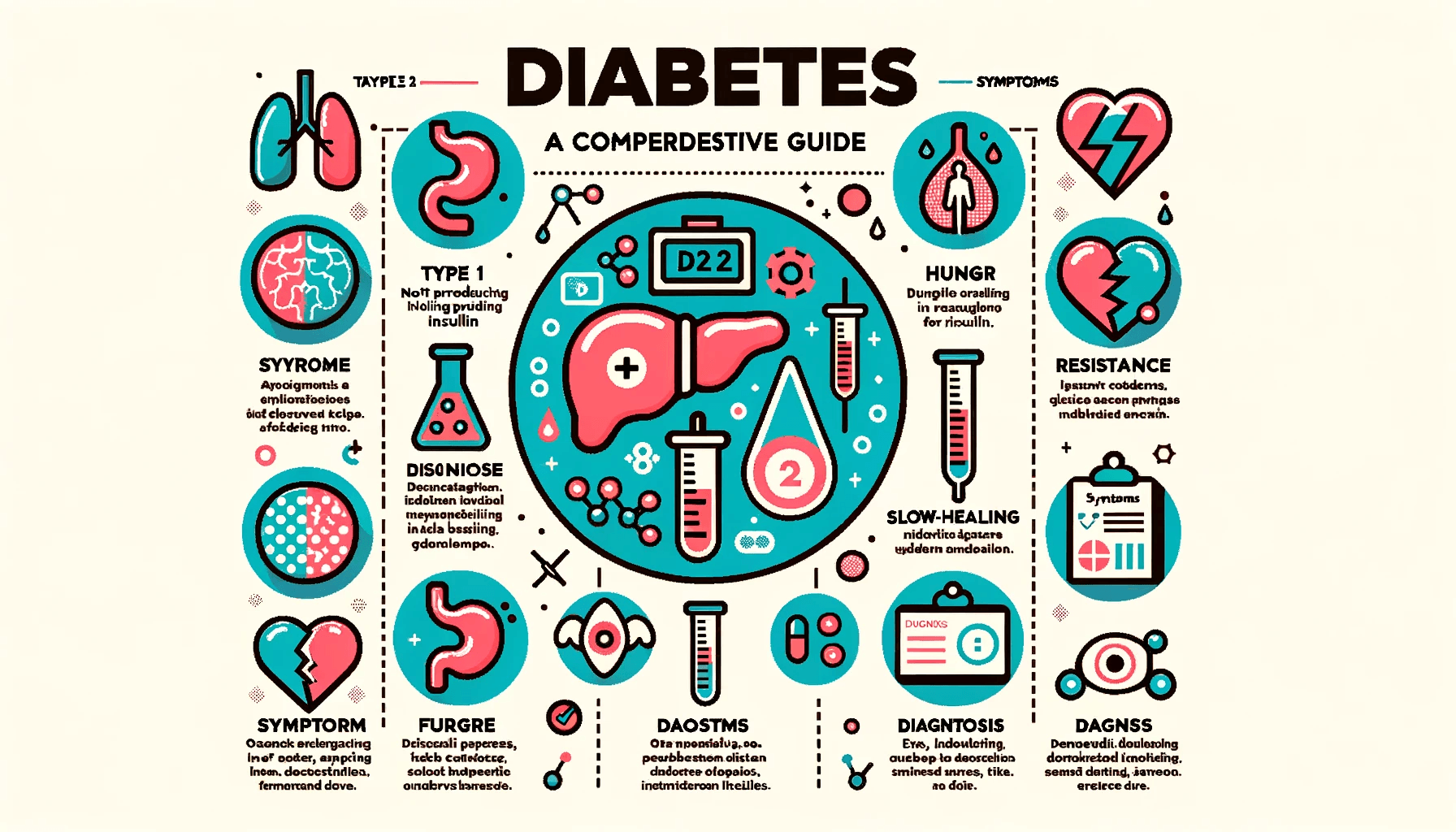
Type 1 diabetes is a chronic condition that has become a significant health concern across the globe. It affects millions of people and requires comprehensive management to maintain a healthy and active lifestyle. With research and understanding, those diagnosed with this condition can effectively manage their symptoms and lead fulfilling lives.
The American Diabetes Association (ADA) provides extensive resources and support to help individuals and families understand and cope with type 1 diabetes. In this article, we delve into the causes, recognize the symptoms, and explore the wide array of treatment options that are available to manage this condition.
🔍 Seeking a breakthrough in Type 2 Diabetes management?
Discover our expert insights and innovative approaches on ‘How to Cure Diabetes’.
Click to transform your health journey today!
What you\'ll find in this article?
What is type 1 diabetes?
Type 1 diabetes, also known as juvenile diabetes, is an autoimmune disorder in which the immune system mistakenly attacks the insulin-producing pancreatic beta cells. This leads to a deficiency in insulin, a vital hormone that regulates blood glucose levels.
Genetic factors and immune system dysregulation are believed to play critical roles in the development of type 1 diabetes, although the exact causes remain unclear. Without insulin, glucose accumulates in the bloodstream, leading to high blood sugar levels with potentially serious health implications.
Despite advancements in treatment, type 1 diabetes currently has no cure. However, with vigilant monitoring and management, individuals can prevent or minimize complications. Understanding type 1 diabetes and its impact is essential for proper disease management.
Explore our specialized services in diabetes care 🌟.
From personalized diet plans to effective exercise routines, we have what you need to take control of Type 2 Diabetes.
Visit our services page now!










Common symptoms of type 1 diabetes
- Excessive thirst and urination
- Weight loss despite normal or increased eating habits
- Fatigue and weakness
- Blurred vision
- Slow-healing sores or frequent infections
These symptoms can develop rapidly and require immediate medical attention to confirm the diagnosis and begin treatment. Early recognition and intervention can significantly improve the quality of life for those affected by type 1 diabetes.
How is type 1 diabetes diagnosed?
The diagnosis of type 1 diabetes involves several medical tests that measure blood glucose levels. A Glycated hemoglobin (A1C) test, which indicates average blood sugar levels over the past two to three months, is commonly used along with random and fasting blood sugar tests.
Confirmatory tests might include assessing the presence of autoantibodies, specific to type 1 diabetes, and checking the functioning of the pancreas through a C-peptide test. Accurate diagnosis is crucial for effective diabetes management.
Once diagnosed, continuous care and routine check-ups are necessary to monitor the condition and adjust treatment as needed.
Treatment options for type 1 diabetes
The cornerstone of type 1 diabetes treatment is insulin therapy. Insulin must be administered through injections or an insulin pump because it cannot be taken orally. The dosage and type of insulin are tailored to each individual's needs, often requiring a combination of rapid-acting and long-acting insulin.
In addition to insulin, a balanced diet and regular physical activity are vital in managing blood sugar levels. Carbohydrate counting and meal planning are effective strategies that help maintain glycemic control. It is also important to consider other medical treatments, such as blood pressure medications and cholesterol-lowering drugs, as part of a comprehensive approach to prevent diabetes complications.
Continuous glucose monitoring (CGM) systems and flash glucose monitoring are technological advancements that have revolutionized how individuals with type 1 diabetes track their blood sugar levels, offering a more detailed and real-time perspective.
Managing blood sugar levels
Maintaining blood sugar levels within a target range is the primary goal of type 1 diabetes management. Frequent blood glucose monitoring is essential, and adjustments to insulin dosing may be necessary based on physical activity, diet, illness, and stress levels.
Learning the signs of both high and low blood sugar (hyperglycemia and hypoglycemia) and how to respond effectively is crucial for managing diabetes day-to-day. Blood sugar control is a delicate balance but can be achieved through meticulous attention to insulin therapy, diet, and lifestyle.
Joining support groups and engaging with the diabetes community can also provide valuable insights and encouragement for living well with type 1 diabetes.
Research and future treatments for type 1 diabetes
Ongoing research offers hope for the future of type 1 diabetes treatment. Studies focus on various aspects, including immune therapy, pancreatic islet transplantation, and the development of an artificial pancreas system which would automate insulin delivery based on glucose levels.
Researchers are also investigating the potential for regenerative medicine to restore the body's ability to produce insulin. Advancements in genetic screening may eventually lead to preventive strategies for those at high risk for developing type 1 diabetes.
While we await these developments, current research findings are continually being integrated into treatment plans, enhancing the quality of life for individuals with type 1 diabetes.
Understanding Type 1 Diabetes | Ada: Complex Questions Simplified
What is the life expectancy of a Type 1 diabetic?
With advances in medical treatments and self-care, individuals with type 1 diabetes can have a life expectancy close to that of the general population. However, maintaining tight blood sugar control is essential to reducing the risk of complications that can affect longevity.
Lifestyle choices, such as a healthy diet, regular exercise, and avoiding smoking, also play a significant role in improving life expectancy. Ongoing medical care and self-management education are vital to achieving favorable outcomes.
What is the simple explanation of type 1 diabetes?
Type 1 diabetes is an autoimmune condition where the pancreas fails to produce insulin, leading to elevated blood sugar levels. It requires lifelong insulin therapy and blood sugar monitoring to manage the disease effectively.
Its onset is often rapid, and it is most commonly diagnosed in children and young adults, although it can occur at any age. The exact cause remains unknown but is associated with genetic and environmental factors.
What are the three stages of type 1 diabetes?
The development of type 1 diabetes can be described in three stages:
- Stage 1: Autoimmunity - The presence of diabetes-related autoantibodies with normal blood sugar levels and no symptoms.
- Stage 2: Dysglycemia - Autoantibodies are present, blood sugar levels become abnormal, but there are still no symptoms.
- Stage 3: Symptomatic diabetes - The classic symptoms of diabetes appear alongside elevated blood sugar levels.
Detecting the disease in its early stages can help delay progression and minimize the risk of complications.
What is the most common age to get type 1 diabetes?
Type 1 diabetes is commonly diagnosed in children and adolescents, typically between the ages of 4 and 7 or during puberty. However, it's important to recognize that type 1 diabetes can develop at any age, and adults can also be diagnosed with what is sometimes referred to as Latent Autoimmune Diabetes in Adults (LADA).
Recognizing the signs and symptoms early is crucial for prompt diagnosis and treatment, regardless of age.
In conclusion, understanding type 1 diabetes is a multifaceted process that encompasses knowing its causes, identifying symptoms, and exploring various management strategies. By staying informed, individuals living with this condition can take proactive steps to manage their health successfully, all while researchers continue to make strides towards future treatments and possibly a cure.
✨ Other articles you might be interested in:
- Understanding and Managing High Morning Blood Glucose Levels
- Scientists Chinese found cure for type 2 diabetes with cellular therapy
- Understanding Warning Signs and Symptoms of Chronic Illnesses
- Understanding hyperglycaemia (hypers) | High blood sugar management and prevention
- Managing Type 2 Diabetes: Essential Tips and Strategies



